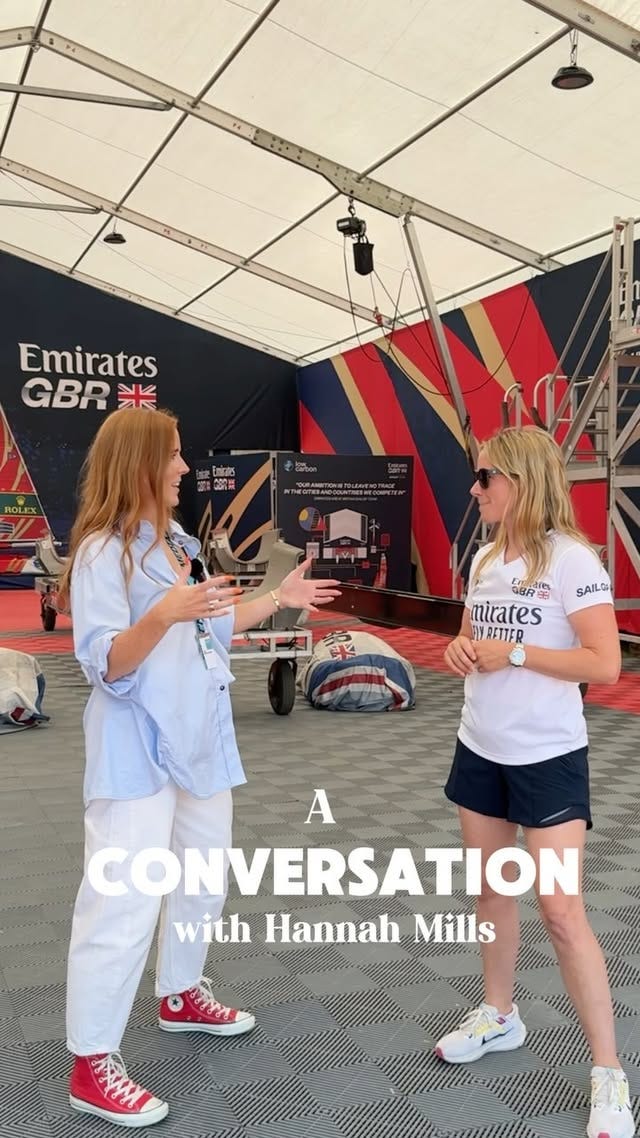SailGP is redefining high-tech racing
Beyond the lazy ‘F1 of the sea’ trap
Thank you for being here. You are receiving this email because you subscribed to Idée Fixe, the newsletter for curious minds. I’m Toni Cowan-Brown, a tech and F1 commentator. I’ve spent the past five years on the floor of way too many F1, FE, and WEC team garages, learning about the business, politics, and tech of motorsports. I hope you’ll stick around.
⏳ Reading time: 10mins
SailGP returned to NYC this past weekend, and it has rapidly emerged as one of the most innovative and commercially ambitious sports leagues in recent years.
In a period when Formula 1 is experiencing unprecedented growth, particularly in the United States, it’s tempting to label SailGP “the F1 of the sea.” And I have certainly pushed back on this - already did so when it was positioned as such to me during the Rolex press trip I attended in NYC last year for the NY Grand Prix. While both sports emphasise cutting-edge technology, data analytics, and dazzling spectator appeal, equating the two leagues overlooks critical differences in their structures, audiences, and long-term sustainability models.
Launched in 2019 by Larry Ellison (Co-Founder and CTO, Oracle) and Olympic champion Russell Coutts, SailGP was conceived to deliver a high-tech, spectator-friendly sailing competition that leverages data-driven performance insights and global broadcast reach. And I’m not certain even they thought it would be this successful.
SailGP’s Rise and Contextual Parallels to F1
From its inaugural season in 2019, SailGP set out to differentiate itself from previous sailing series (e.g., the Extreme Sailing Series) by centring on identical foiling catamarans (the F50), shared technical knowledge to minimise “arms races,” and a season-long championship culminating in a $1 million grand final.
In Season 1, SailGP attracted over 133,000 live spectators across five events and broadcast to an estimated 1.8 billion viewers globally, generating over $115 million in economic impact for host cities. This data-centric approach mirrors Formula 1’s emphasis on telemetry, aerodynamics, and race strategy, and similarly aims to make sailing more accessible and thrilling for spectators (and potential sponsors).
In the United States, Formula 1 has surged in popularity, driven in part by the success of the Netflix series Drive to Survive, new stadium-style venues (e.g., Miami, Las Vegas), and a younger, digitally engaged and social-first fan base. SailGP events in U.S. cities such as San Francisco, Chicago, Los Angeles and New York have drawn considerable crowds, arguably benefiting from sailing’s alignment with tech-focused spectators and execs who appreciate real-time data visualisation and immersive experiences. Both leagues emphasise fan engagement through digital platforms (live data overlays, onboard cameras, augmented reality), creating the perception that tech-savvy F1 fans may naturally gravitate toward SailGP.
Why “F1 of the Sea” Is a Misleading Analogy
Despite surface similarities, calling SailGP “the F1 of the sea” can be a trap - for both the fans and potential sponsors:
Sporting Culture and Heritage. F1 has over 70 years of continuous history, legendary circuits (Monaco, Spa, Silverstone), and iconic drivers whose legacies permeate global motorsport culture. SailGP, by contrast, is a nascent series with less entrenched heritage. While SailGP leverages the star power of founders Ellison and Coutts, and attracts some celebrity co-owners (e.g., Kylian Mbappé, Sebastian Vettel, and now Ryan Reynolds and Hugh Jackman), it currently lacks the generational narrative that defines F1’s fanbase.
Team Ownership & Commercial Model. In F1, teams have deep roots going back decades, often backed by automotive manufacturers (Mercedes, Ferrari) with multi-decade investments. SailGP began with centralised ownership of all 10–12 teams by F50 League LLC, intending to transition to private ownership over time. As of 2025, only about half of SailGP’s teams are privately owned, and valuations remain volatile. For example, the U.S. SailGP team is seeking new investment at a $125 million valuation, reflecting high commercial expectations yet still dwarfed by the recent multi-billion-dollar F1 team valuations.
Audience & Broadcast Footprint. F1 reaches hundreds of millions of viewers per Grand Prix, boosted by long-established broadcast contracts (e.g., ESPN in the U.S., Sky in the UK). SailGP has made impressive gains by securing broadcast deals with TNT Sports (UK/Ireland), ZDF (Germany), FOX Sports (Australia), and recently increasing U.S. coverage - but its cumulative viewership remains an order of magnitude smaller. Furthermore, F1’s digital engagement (social media, streaming highlights) already rivals traditional broadcast metrics, whereas SailGP is still building its global digital following.
Economic Scale & Sponsorship Depth. While both series court luxury and technology brands, the scale differs significantly. SailGP secured long-term global league partnerships with Rolex (10-year title sponsorship), Emirates, and DP World in late 2024, signalling strong commercial interest. Yet F1’s annual sponsorship revenues (from title sponsors, team sponsors, and host fees) exceed $2 billion. By comparison, SailGP’s entire 2024–25 season sponsorship revenue is estimated in the low tens of millions, though growing. Equating SailGP to F1 risks pressuring SailGP to pursue unsustainable sponsorship valuations that neither align with its current viewership nor its long-term growth trajectory.
Given these differences, framing SailGP as an upstart “F1 of the sea” underestimates the unique dynamics and challenges facing a sport that still must prove its ability to cultivate a dedicated, global fanbase independent of F1 spillover.
SailGP’s League Structure
To understand why comparing SailGP to F1 is problematic, it’s important to review SailGP’s foundational design and operational model:
Identical F50 Catamarans: Every race is contested in the same one-design foiling catamarans (F50), which cost approximately $8 million each. SailGP centrally maintains and operates these boats, and technical data (via Oracle sensors and software) is shared among teams to prevent an “arms race” that would escalate costs and emphasise budget over skill. This contrasts with F1, where teams develop proprietary aerodynamics and chassis, leading to very high year-over-year R&D costs.
Season Format: A typical SailGP season spans ten global “Grand Prix” events, each over two days:
Day 1: Three fleet races.
Day 2: Two fleet races plus a match-race final between the top two scoring teams from Day 1.
Points System: Teams earn points based on finishing positions in fleet races (e.g., 10 points for 1st, 9 for 2nd, etc.), culminating in an “Impact League” ranking that rewards sustainability performance.
Championship Final: At season end, the two highest-ranking teams contest a match-race final for a $1 million cash prize, providing a high-stakes climax for broadcast audiences.
Team Ownership Evolution: Initially, F50 League LLC owned all teams, ensuring parity and control over operations. By Season 4 (2023–24), five of ten teams became privately owned; by 2025, ten of twelve teams have private ownership groups that include high-profile investors (e.g., Anne Hathaway’s female-led consortium acquiring the Red Bull Italy team, Reynolds/Jackman co-owning the Australian team, and a Muse Sport-led group buying the U.S. team. This gradual privatisation is sailors’ attempt to foster deeper local and celebrity-based engagement, but it also introduces variance in team budgets, marketing reach, and performance resources that SailGP initially aimed to eliminate with centralised ownership.
Impact League & Sustainability Focus: SailGP was the first global sports league to integrate sustainability into its core competition. Each event yields an “Impact League” ranking - evaluating teams on carbon reduction, gender equity, and community engagement - where top-ranked teams earn prize money to donate to sustainability partners. This “Podium for the Planet” initiative has attracted partners like Accor (multi-year global partnership announced in early 2025), which seek to align their brand values with green innovation. Each team, at a minim also has a female athlete on board, meaning these women have already pointed out changes needed to the F50 to properly and safely accommodate all athletes.
Broadcast & Fan Engagement: SailGP’s broadcast model combines traditional TV rights with proprietary live streaming via app and website, featuring live data overlays (although that seems to be up in the air for now), 360° camera angles, and on-boat cameras. While F1 has more mature “blacked-out” major market livestream restrictions, SailGP’s digital-first approach aims to capture younger, digitally native audiences accustomed to interactive sports viewing. Yet, because SailGP’s events often take place in iconic harbours (Sydney, San Francisco, New York, Cowes, Marseille), in-person attendance is higher per capita in those sailing hubs than F1’s attendance in single locales. This creates a niche but passionate fan community that is not yet the global phenomenon F1 enjoys
Is SailGP “Riding the F1 Wave” in America?
It’s undeniable that SailGP’s growth in U.S. markets has paralleled F1’s accelerating popularity. The combination of SailGP events in marquee American waterways (e.g., San Francisco Bay, New York Harbour) and F1’s rising U.S. viewership has created an overlapping audience of “aspirational tech-sport” enthusiasts.
Both leagues emphasise real-time data visualisation - F1’s live telemetry overlays on broadcast vs. SailGP’s on-screen performance dashboards which appeals to tech executives and data nerds. The tech isn’t hidden in a white-paper; fans touch it every time they open an app, watch a race or read a race recap. That’s brand rejuvenation by utility, not just logo placement for the tech brands like Oracle (in SailGP and F1) and AWS, IBM and Juniper Networks (in F1).
However, SailGP cannot rely solely on proximity to F1’s audience for sustainable growth. Unlike F1, which benefits from an entrenched global fanbase and decades of accumulated brand equity, SailGP must prove that its niche appeal - high-speed foiling catamarans, harbour-based spectacles, and sustainability-driven competition -can stand on its own. If SailGP is perceived merely as “F1 of the sea,” several pitfalls emerge: inflated expectations where investors may demand rapid scale mirroring F1’s growth curve, and dilution of a unique value proposition, by borrowing too heavily from F1’s playbook (e.g., chasing large broadcast rights fees, focusing on luxury consumer activations), SailGP risks losing its distinctive identity as a sustainability-focused, community-engaging, data-driven league.
To maximise its potential, SailGP should continue to highlight its differences -sustainability (Impact League), accessibility (free-to-view harborside viewing), and cutting-edge foiling technology - rather than attempting to replicate F1’s aura.
Charting SailGP’s Own Course
SailGP’s meteoric rise since 2019 underscores its potential as a next-generation sports league that marries high-performance sailing with advanced data analytics, sustainability initiatives, and premium hospitality experiences. Its growth in the U.S. has undeniably benefited from F1’s current popularity, as both sports attract tech-oriented, data-loving audiences seeking novel, experiential events.
By understanding SailGP’s distinct league structure - centralised boat ownership, one-design F50 catamarans, Impact League sustainability focus - and recognising the real scale of its sponsorship ecosystem (Rolex, Emirates, DP World, BONDS, Accor, SPORTFIVE, and celebrity co-owners), we see a sport forging its own path rather than merely shadowing F1. The lesson is clear: SailGP is not a maritime F1 clone but an innovative, data-driven, and sustainability-minded sailing league with its own trajectory.
Its success will depend on maintaining this unique identity, responsibly scaling commercial partnerships, and nurturing a dedicated global fanbase, rather than chasing F1’s playbook and risking strategic misalignment.
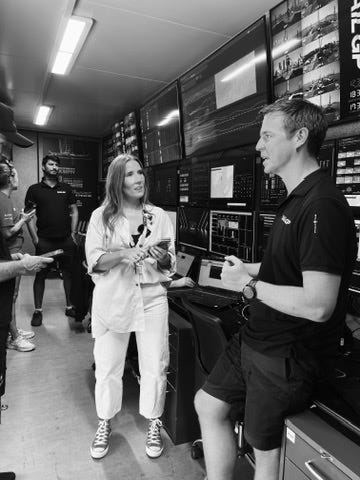

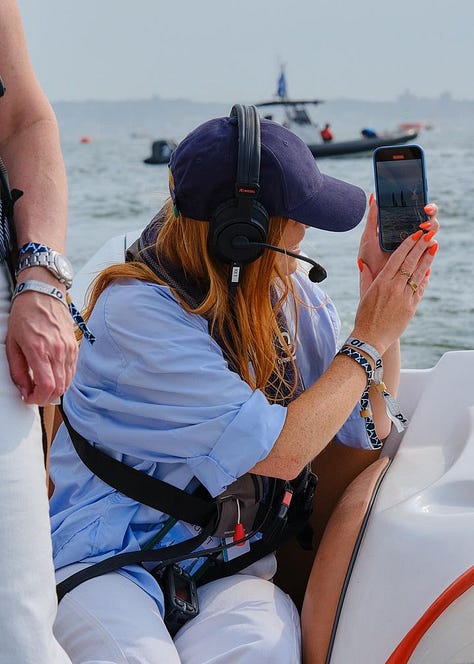

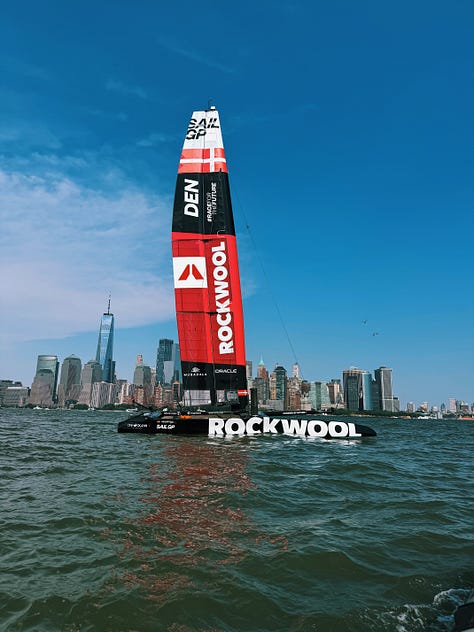
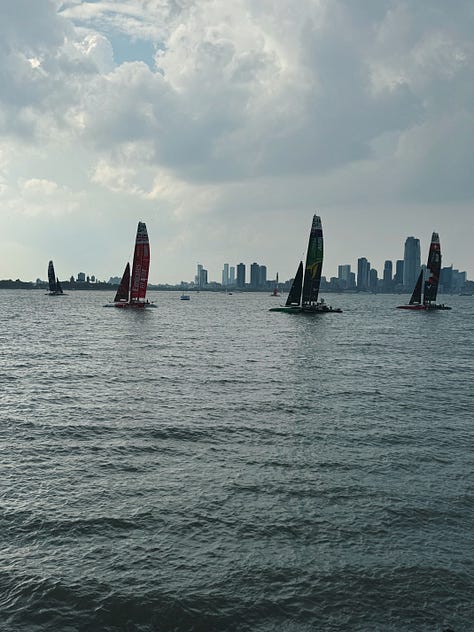
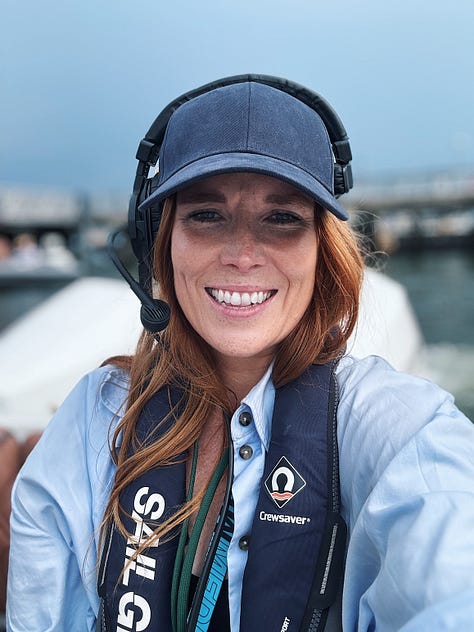
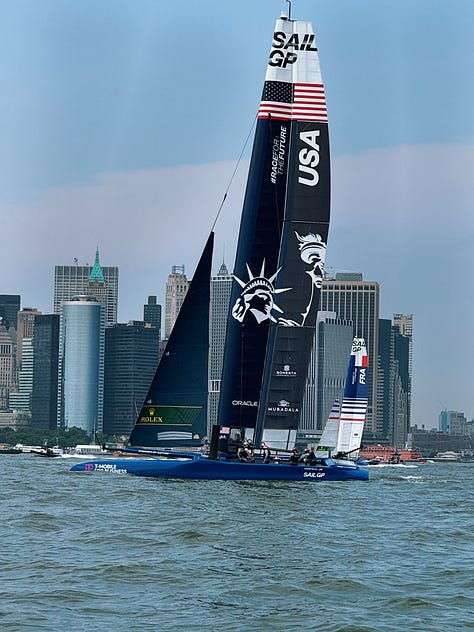

🔗 How Rolex Paved the Way for Luxury’s Love Affair With Tennis | Front of Office
When Iga Świątek and Carlos Alcaraz hoisted their trophies on the clay courts of Roland-Garros last year, they had already ditched the terry-cloth sweatbands on their wrists for Rolex watches—the gold crown logo a ubiquitous presence in the professional tennis world. Read here.
🔗 Can Sports Replace Scripted Television Viewership on Broadcast TV? | The Entertainment Strategy Guy
I hate the old journalistic cliche of “seismic shift”, but for at least two channels, it feels like that hypothetical seismic shift happened. Two broadcast channels are making smart scripted content bets, and two broadcast channels are making a very risky bet/sort of getting out of scripted television. All that, plus a look at other cable/broadcast TV show renewals, the big kids show news from two days ago, and a bunch of updates on shows switching streamers or content being removed. Read here.
🔗 I went to my first Savannah Bananas game | Huddle Up
There has been a lot of chatter recently about whether or not the Bananas are good for baseball. Every time I tweet or write about the team, someone inevitably says that they don’t “get” why so many people are interested in watching them play. That’s why I went to the game last night. I wanted to see for myself what all the hype was about. Read here.




